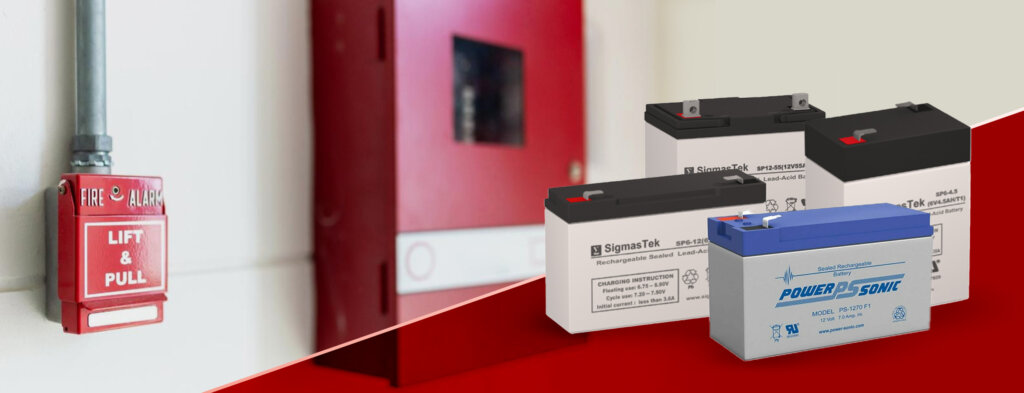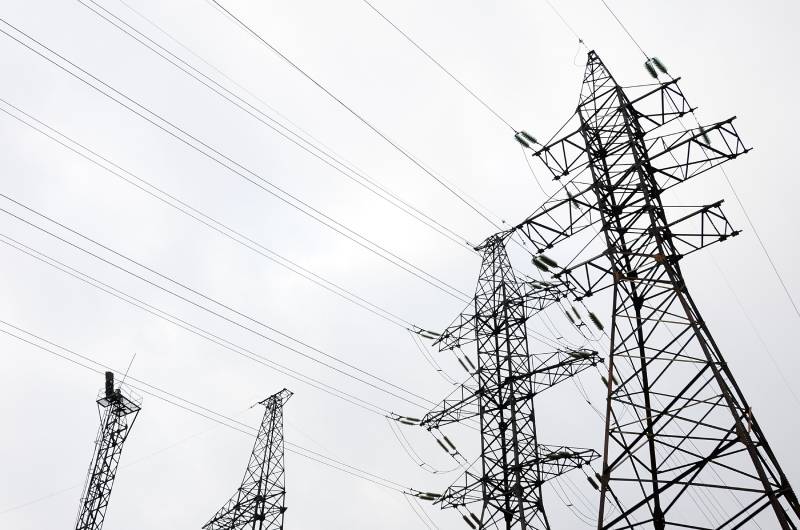
The power supply provides the fire alarm control panel, and by extension, all of its connected parts with energy. According to the NFPA 110, Standard for Emergency and Standby Power Systems, all fire alarm systems require a primary power source, along with a secondary source in the event of a power failure. Essentially, the secondary power source is a safeguard, allowing the fire alarm system to operate even in the event of a power outage. Given the inevitability of blackouts and power outages, it is required to prepare and protect your facility during these events. The good part is, the flexibility of the codes allow many different ways to fulfill your requirements. In this post, we will review different power supply solutions, while helping you decide which one might suit your needs best.
For your primary power supply, fire alarm systems are typically connected to the electric grid. However, there are other methods that will also keep your system compliant. For example, systems may use engine-driven generators, cogeneration systems, or Stored-Energy Emergency Power Supply Systems (SEPSS).
Here is an overview of all of these systems:

Electric grid power transmission lines
In the event of a power failure, it is important to always have backup power source. According to the NFPA, fire alarm systems are considered a level 1 system. This means that failure of this system is directly dangerous to people’s lives. In the absence of a backup power source, occupants won’t be warned about a fire, and emergency controls will not be activated. As a result, a power outage could be dangerous for the occupants during a real emergency situation. To add, power outages may happen for a plethora of reasons. Planned outages, equipment failure, inclement weather, and construction mishaps are only a couple of the reasons your power may go out. In these situations, it is necessary to have a separate (secondary) energy source by which the panel can still carry out its functions.
Read More: What Are the Minimum Requirements for a Fire Alarm System? >>
The power source for the fire alarm system must power the initiating circuit, notification circuit, supervision circuit, output circuits, as well as the panel itself. To meet the requirements of NFPA 110, secondary power supplies are required to power your system when primary power fails or experiences an outage. Consequently, you must choose a secondary power supply that is engineered to deliver sufficient capacity to keep the system running for 24 hours in standby mode. To add, they must operate for at least 15 minutes during while under load if an alarm is activated.
If you have an emergency generator as a backup power source, you will still need a backup battery to be code compliant. In this case, your backup battery only needs to be able to power the entire system for 4 hours. To elaborate, this gives you just enough power to troubleshoot any issues, should you have problems with your backup generator.
Besides a SEPSS or generator, backup batteries are an extremely convenient and inexpensive way to provide a secondary power solution. They are typically located within the fire alarm control unit enclosure, but you can also use a dedicated battery box located near your panel. For this use case, a valve-regulated sealed lead-acid (SLA) battery is typically used. These sealed lead-acid batteries provide low-risk, repeatable discharge and recharge characteristics for effective use in fire alarm systems.
The fire alarm control panel is able to monitor the voltage of your backup battery and send a trouble signal if something is wrong. Also, most panels will give you an audible signal to notify you when to replace your battery. In this case, simply replace the battery and make sure to record the date you installed the new one.
In addition to your control panel’s diagnostics, maintenance of your power supply system is also necessary. Every three years your batteries need to be replaced, or you need to conduct a load test to ensure reliability. A load test can be conducted by placing a known load on the battery, or by following the load recommended by the product manufacturer. If you have a backup generator, they are also subject to load tests to ensure that your systems are working properly. Testing, maintenance, and record-keeping is always required, especially when you have systems that are directly related to the preservation of life. In the case of life-saving medical equipment, you should start your generators on a weekly basis, and regularly check that your panel batteries are functional. Likewise, regular testing of your fire alarm system’s power is also highly recommended.
The NFPA 110 covers installation, operation, maintenance, and testing for the proper performance of power supplies and EPSS. The routine maintenance of your systems should be carried out by a certified individual. The NFPA recommends that you maintain your backup power supply according to the manufacturer’s instruction manuals, as well as the minimum requirements of the chapter and your local code authorities.
Making sure your fire alarm system is always functional is of extreme importance. Not having a secondary power supply is against fire code, and may lead to the unnecessary loss of life. Preventing these outcomes depends on having another source of power that can operate independently from the electric grid and primary energy generation systems.
At FireAlarm.com, we understand the importance of fire and life safety compliance. Our expert team is ready to assist you with systems design, installation, inspection, and maintenance services tailored to your needs. Don’t compromise on safety—ensure your systems are up to date and effective. Reach out to us today to discuss how we can support you in achieving optimal fire safety in your building.
$25.99
$67.49
$6.19
$15.79
$75.99
$321.99
$135.99